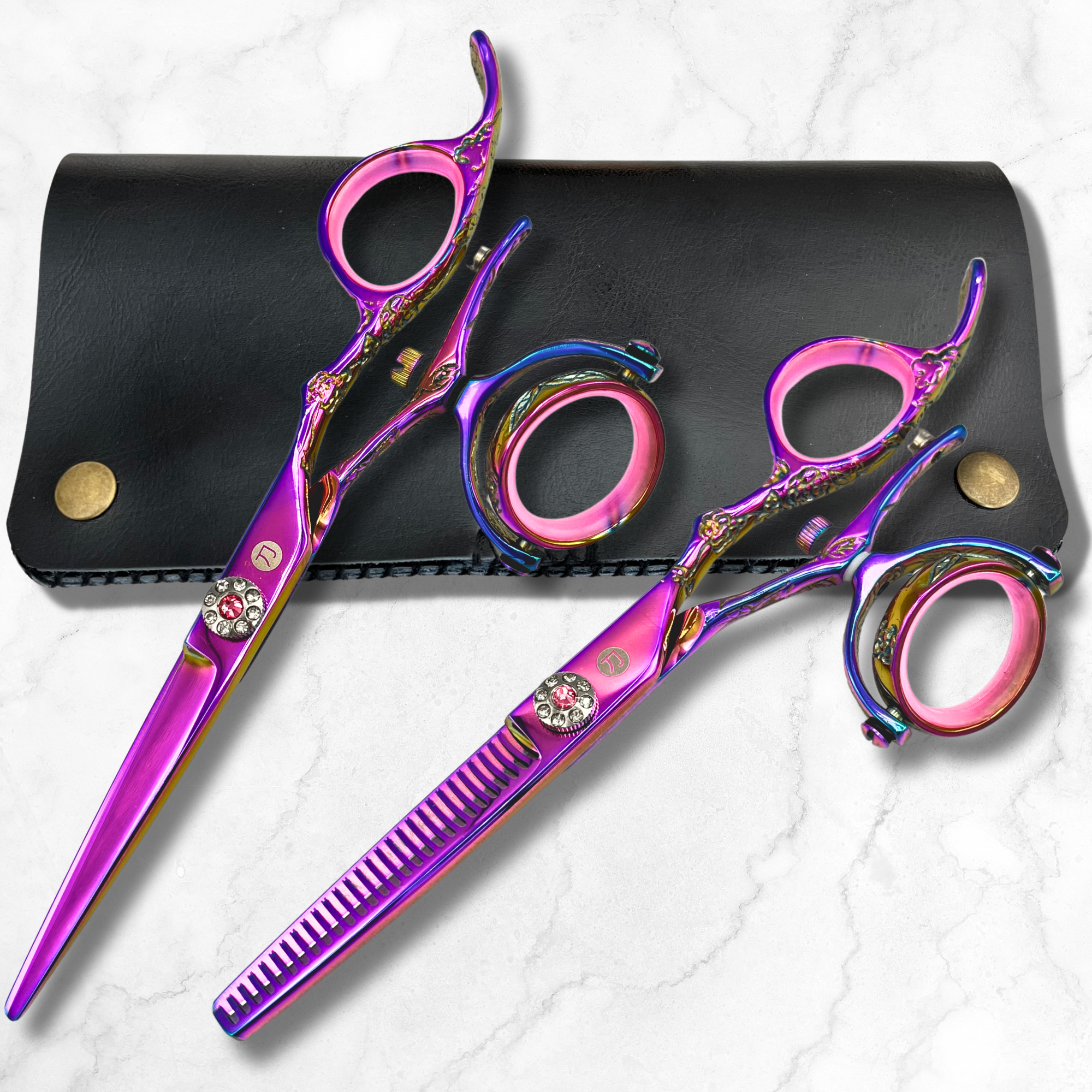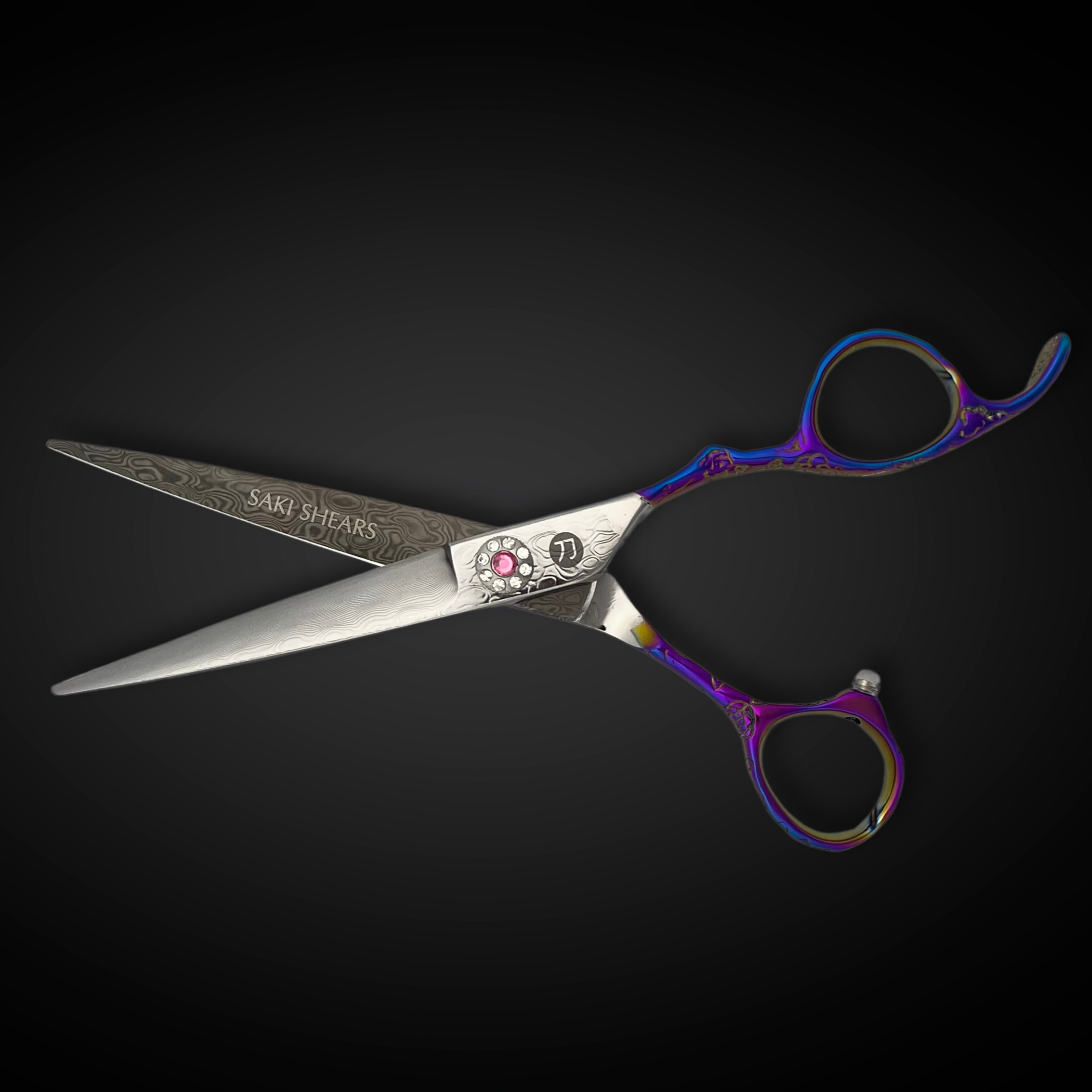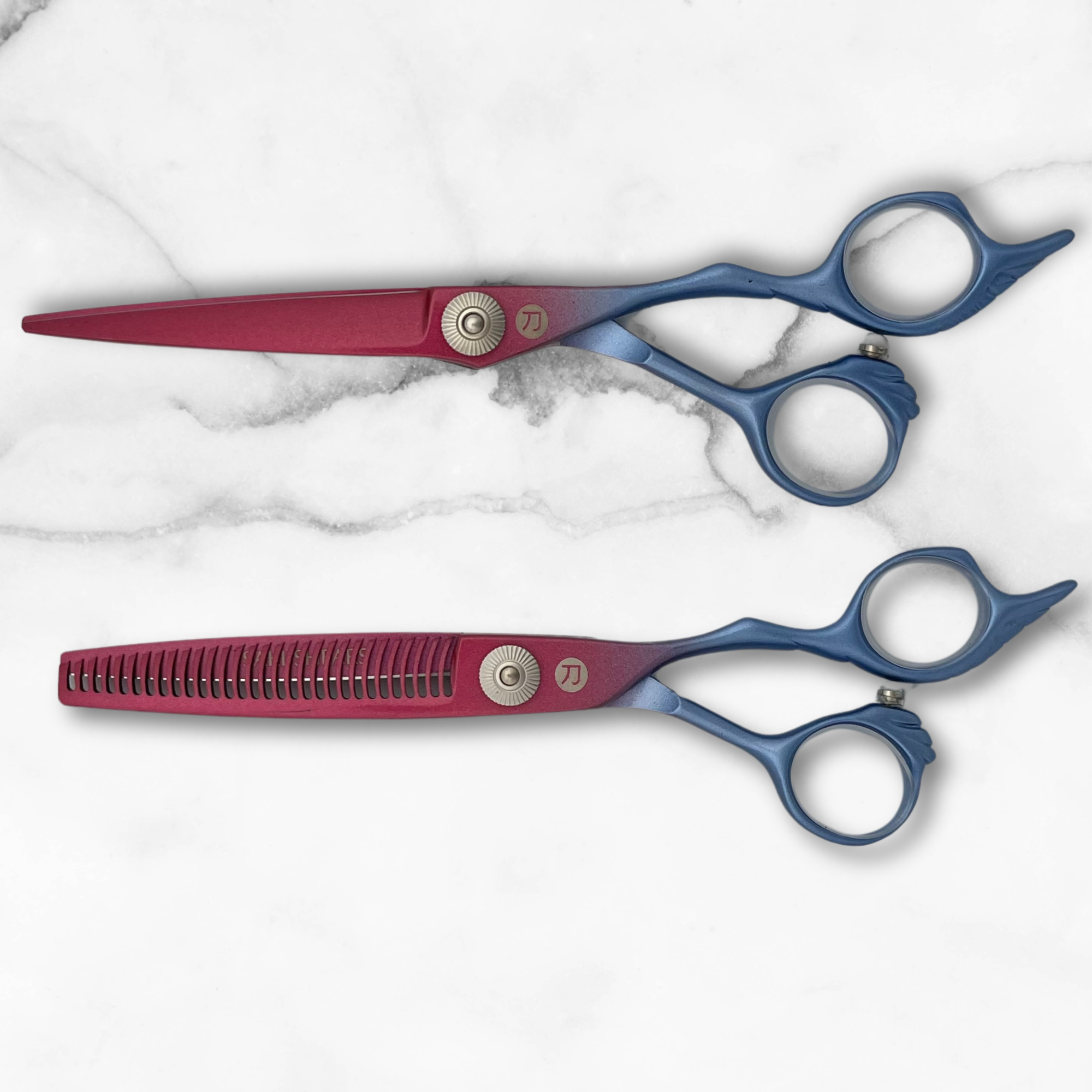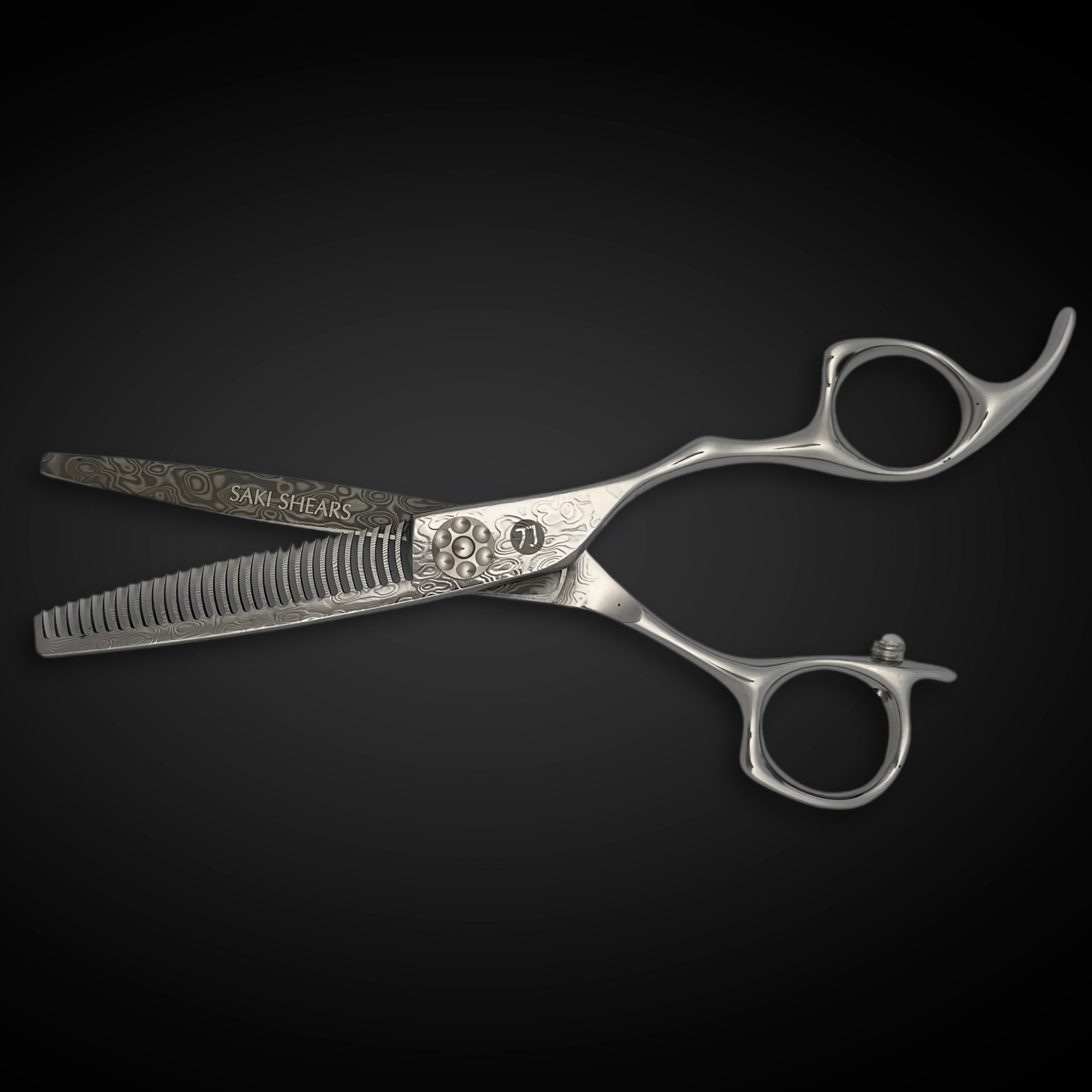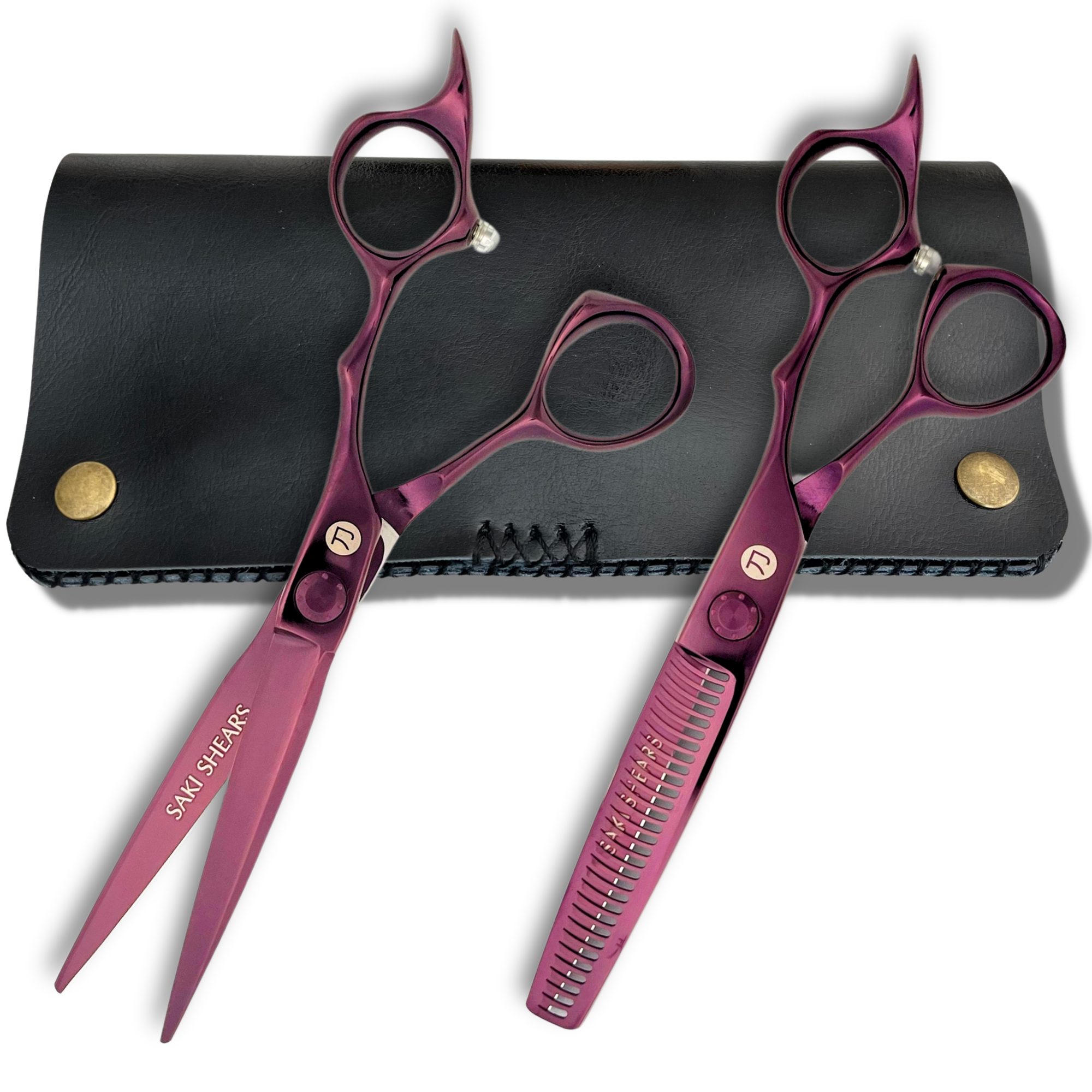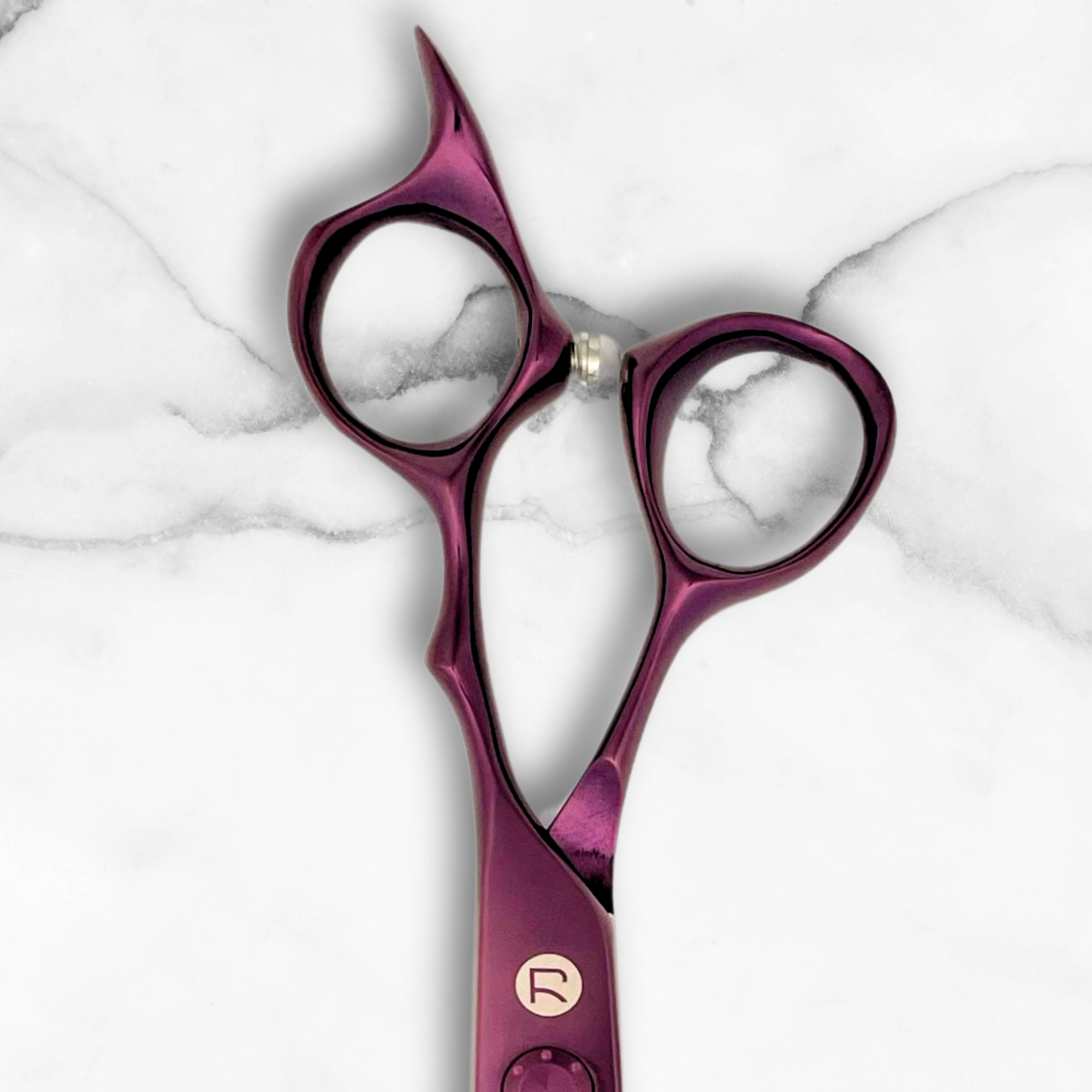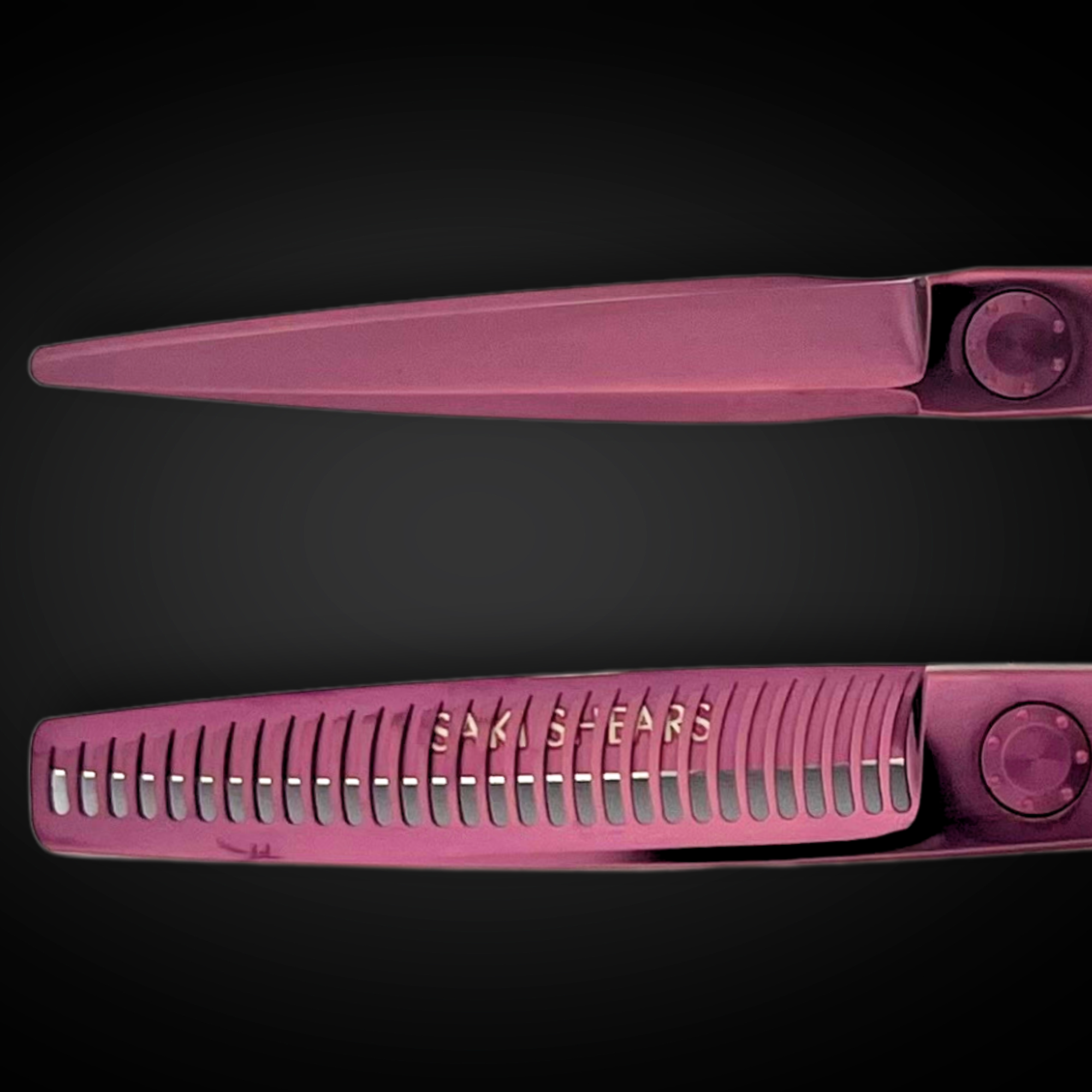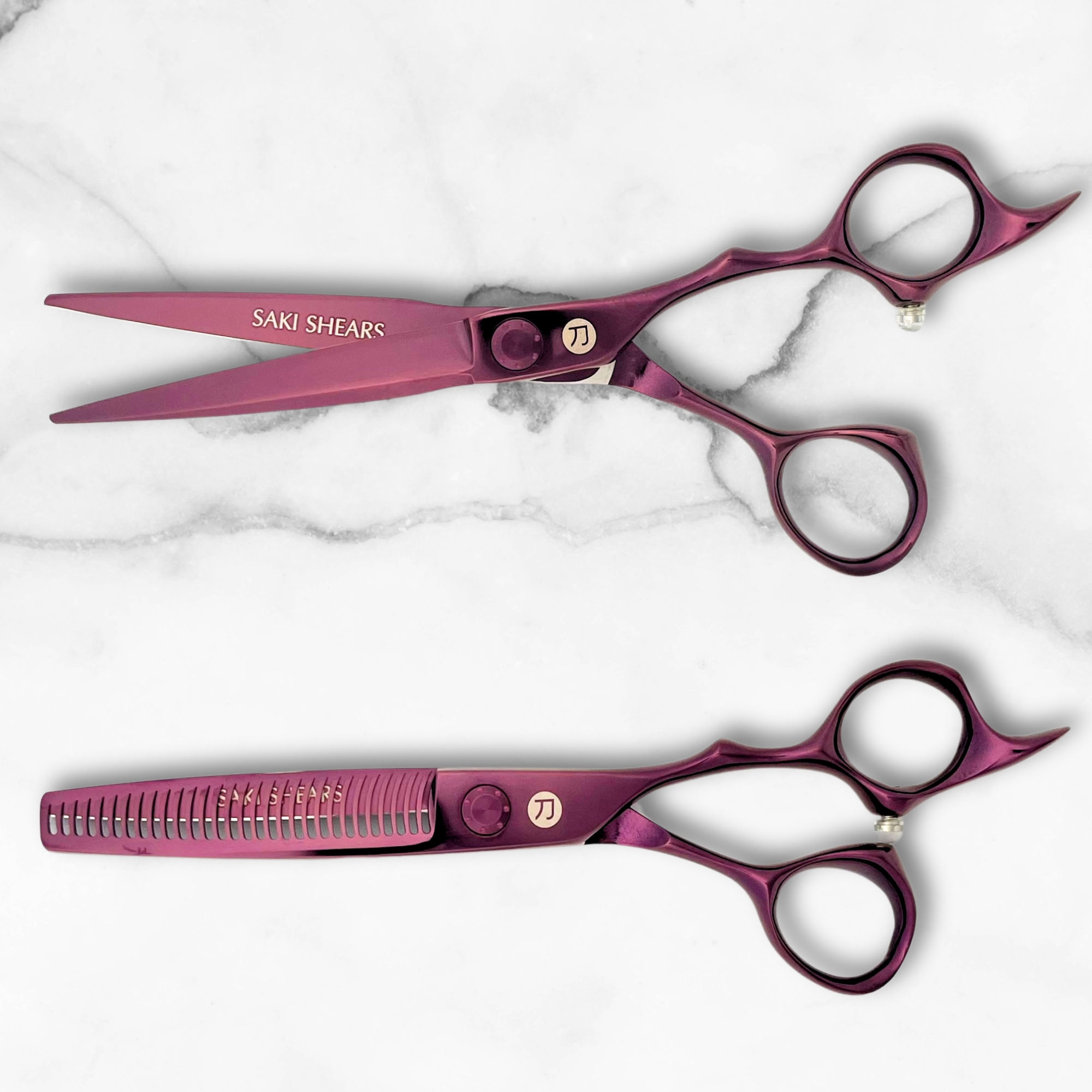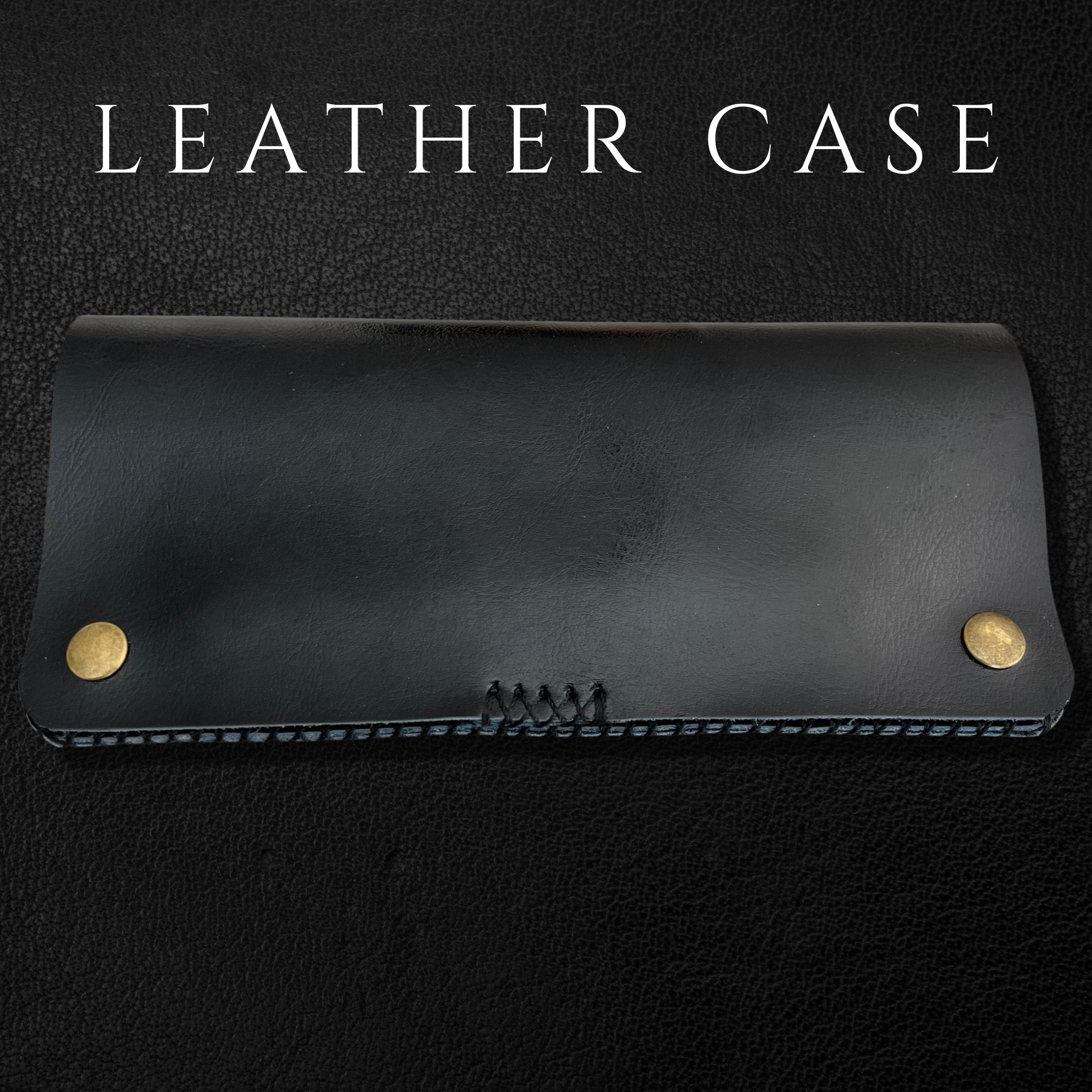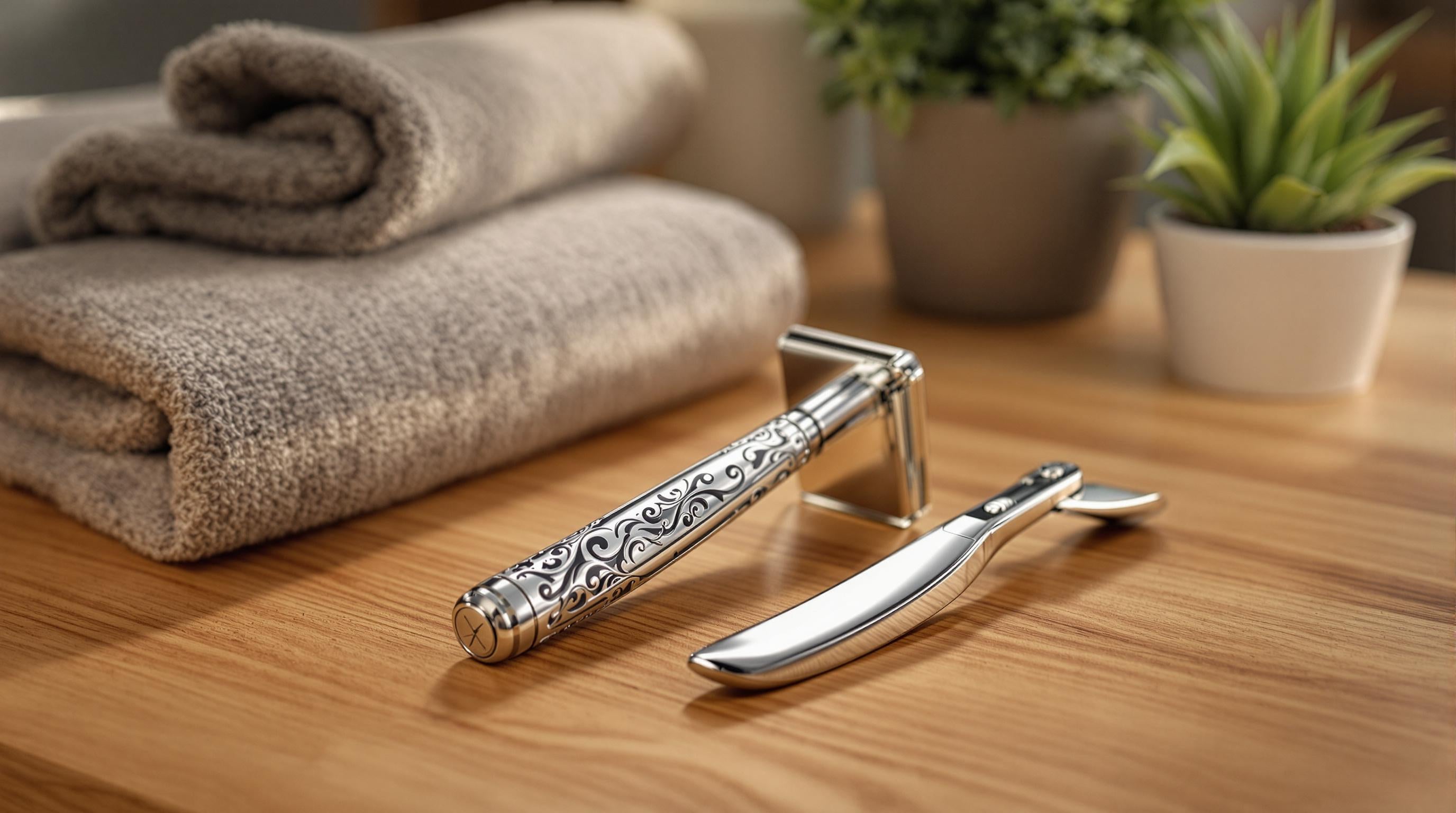Fixed Blade vs. Shavette: Pros and Cons of Each for the Perfect Shave
Fixed blade razors and shavettes are two popular tools for achieving a clean, precise shave. Here's a quick breakdown to help you decide:
- Fixed Blade Razors: Durable, long-lasting, and built for precision. They require regular maintenance (honing and stropping) and have a higher learning curve but deliver a premium shaving experience.
- Shavettes: Lightweight, beginner-friendly, and use disposable blades for convenience. Ideal for professionals who prioritize hygiene and speed but may lack the precision and control of a fixed blade.
Quick Comparison
| Feature | Fixed Blade Razor | Shavette |
|---|---|---|
| Durability | Lasts decades with proper care | Handle lasts 3-5 years; blades disposable |
| Maintenance | Requires honing and stropping | No sharpening; replace blades |
| Cost | Higher upfront, lower long-term | Lower upfront, ongoing blade costs |
| Skill Level | Higher learning curve | Easier for beginners |
| Hygiene | Requires cleaning and care | Disposable blades ensure sterility |
| Precision | Excellent control and balance | Lightweight, less control |
Key Takeaway: Choose a fixed blade for craftsmanship and long-term use. Opt for a shavette if you need convenience, hygiene, or are just starting out.
Differences Between Fixed Blade Razors and Shavettes
Blade Design and Construction
Fixed blade razors come with a single, permanent blade made from durable, high-grade steel. These blades are typically longer, letting you cover more area with fewer strokes. The added weight and balance of a fixed blade improve control, making it ideal for navigating tricky contours - features often preferred by professionals.
Shavettes, on the other hand, use replaceable double-edge blades split into halves. While their lightweight design makes them convenient, it can affect the overall shaving experience. These design differences also play a role in how much upkeep each razor requires, as we’ll discuss next.
"A straight razor relies upon the sharpening process to cut down your hairs. In addition, the shavette suffers from lack of weight. Its not something new straight razor users think about when buying a razor, but a shavette is extremely light weight." [2]
Maintenance and Longevity
Fixed blade razors require regular honing and stropping to keep their edge sharp. While this takes time and skill, a well-maintained blade can last for years. Shavettes, however, eliminate the need for sharpening by using disposable blades. This feature makes them especially appealing in professional settings where saving time is a priority.
| Maintenance Aspect | Fixed Blade | Shavette |
|---|---|---|
| Regular Care | Honing and stropping required | Simple cleaning only |
| Blade Longevity | Years with proper maintenance | 2-3 shaves per blade |
| Time Investment | High maintenance time | Minimal upkeep |
| Cost Structure* | Higher upfront, lower long-term | Lower upfront, ongoing blade costs |
*Cost differences tie back to the earlier point about balancing long-term value with convenience.
Skill Level and Learning Curve
The level of expertise needed varies greatly between these two tools. Fixed blade razors demand a higher level of skill, as users must learn both shaving techniques and blade maintenance.
"The straight razor's cutting performance is different according to each manufacturer, blade grind, weight, honing method, sharpener's skill level, and steel." [2]
Shavettes, with their simpler design and disposable blades, are more beginner-friendly. They allow new users to focus on refining their shaving technique without worrying about maintenance. However, their lighter weight and different balance require some adjustment in handling. These differences in learning curves also affect the overall cost and value, topics we’ll explore further in Choosing Between Fixed Blade and Shavette.
Advantages and Disadvantages of Fixed Blade Razors
Advantages of Fixed Blade Razors
Fixed blade razors are known for their precision and sturdy build. Their solid construction and balanced weight make them ideal for detailed work. They’re built to last, often lasting decades with proper care, and their reusable nature helps cut down on waste over time. This makes them a great option for those looking for a long-term shaving tool.
Disadvantages of Fixed Blade Razors
However, maintaining a fixed blade razor takes effort. Regular stropping and honing are necessary to keep the blade sharp, and these skills take time to master. Additionally, the upfront cost - ranging from $50 to $200 - can be a hurdle for beginners. The learning curve and maintenance requirements are worth considering before committing.
Fixed Blade Razor Pros and Cons Table
| Aspect | Advantages | Disadvantages |
|---|---|---|
| Durability | Built from high-quality steel, lasts for years | Needs regular upkeep to avoid rust or damage |
| Performance | Offers excellent precision and control | Requires practice to achieve the best results |
| Cost | Long-term savings | Higher initial investment ($50-$200 range) |
| Maintenance | Blade can be re-sharpened repeatedly | Stropping and honing require skill and time |
| Environmental Impact | Generates little waste over time | Beginners may waste materials during learning |
| Versatility | Great for detailed and precise work | Can be tricky to use in tight or awkward spots |
The durability and weight of fixed blade razors play a big role in their performance. While they offer a premium shaving experience, the maintenance and learning curve make them better suited for those willing to invest time and effort.
Advantages and Disadvantages of Shavettes
Advantages of Shavettes
Shavettes bring several practical benefits, especially for professionals:
- Hygiene and convenience: The disposable blade system ensures cleanliness between clients without the need for maintenance. This makes them a reliable choice in professional settings.
- Lightweight design: Their light build reduces hand fatigue, making them suitable for long hours of use during busy days.
- Travel-friendly: Compact and equipped with replaceable blades, shavettes are easy to pack and ideal for grooming on the go.
Disadvantages of Shavettes
Despite their benefits, shavettes have some drawbacks that users should consider:
- Handling challenges: The lightweight design can make them tricky to control, especially for beginners. This increases the risk of nicks and cuts compared to sturdier fixed blade razors [1].
- Blade performance: Replaceable blades don’t match the precision and durability of fixed blade razors. While the initial cost is lower, the expense of frequent blade replacements adds up over time.
Shavette Pros and Cons Table
| Aspect | Advantages | Disadvantages |
|---|---|---|
| Hygiene | Disposable blades ensure sterility | More waste from frequent blade changes |
| Maintenance | No honing or stropping needed | Regular blade replacement required |
| Learning Curve | Easier to start using | Higher risk of cuts due to blade flexibility |
| Cost | Lower upfront investment | Higher long-term costs from replacement blades |
| Portability | Lightweight and travel-friendly | Less durable construction |
| Performance | Quick blade changes for a fresh edge | Less precise than fixed blade razors |
Choosing between a shavette and a fixed blade razor largely depends on individual priorities, such as ease of use, hygiene, or the level of precision needed for shaving tasks.
Choosing Between Fixed Blade and Shavette
Skill Level and Experience
Your level of expertise plays a big role in deciding between these two options. Fixed blade razors require a high degree of skill to use effectively. Beginners often face a steep learning curve, as techniques like stropping and honing take time and practice to master.
Shavettes, on the other hand, are much easier for newcomers. Their design is beginner-friendly while still meeting the expectations of professionals.
Usage Frequency and Maintenance
How often you shave can also influence your decision. Fixed blade razors need regular stropping and occasional honing to maintain their edge. While these tasks require practice, they help ensure the razor performs at its best.
Shavettes are ideal for frequent use, particularly in professional settings. Their disposable blade system eliminates the need for stropping and honing, making them a practical choice for barbers who need to quickly switch blades between clients.
Budget and Long-Term Costs
The financial aspect is another important factor to consider. Here’s a breakdown of the costs associated with each option:
| Cost Factor | Fixed Blade Razor | Shavette |
|---|---|---|
| Initial Investment | $50-$200+ | $20-$50 |
| Maintenance Tools | Strop ($40-$100), Honing stone ($50-$150) | None required |
| Ongoing Costs | Occasional professional honing ($20-$40) | Replacement blades ($5-$10 per pack) |
| Lifespan | Several decades with proper care | 3-5 years for the handle |
Fixed blade razors have a higher upfront cost but are more economical in the long run, as they don’t require frequent blade replacements. Shavettes, while cheaper initially, come with recurring costs for replacement blades.
If you value traditional craftsmanship, go for a fixed blade. If you need convenience and efficiency, a shavette is the better choice.
Conclusion and Recommendations
Key Differences Recap
Let’s revisit the main points about maintenance, cost, and skill requirements:
- Fixed blade razors are built to last and deliver precise shaves. With proper care - like stropping and honing - they can remain a dependable grooming tool for decades.
- Shavettes, on the other hand, bring a modern twist to traditional shaving. Their disposable blades make them convenient and hygienic, especially in settings where multiple users are involved.
Choosing the Right Razor
When deciding, consider these factors to find the best fit for your needs:
For Professional Barbers: Shavettes are ideal for maintaining hygiene and working efficiently. Models like the Parker SRX and Feather SS are trusted by professionals for their dependable performance and ease of use.
For Grooming Enthusiasts: If you're passionate about shaving, a fixed blade razor is worth the investment. While it requires regular maintenance, the payoff is a consistently high-quality shave and a tool that can last a lifetime.
For Beginners: Shavettes are a great starting point. Their replaceable blades and familiar design make them easier to handle while you build confidence and technique. Once you're comfortable, you can explore fixed blade razors for a more traditional experience.
Here’s a quick guide to match your priorities:
- Hygiene and convenience: Go with a shavette.
- Appreciation for craftsmanship: Opt for a fixed blade razor.
- Easier learning curve: Stick with a shavette.
- Long-term durability: Choose a fixed blade razor.
Each option has its strengths - it’s all about what matters most to you.
Straight Razor vs Shavette: Pros and Cons Comparison
FAQs
Here are answers to some common questions about using shavettes in professional settings:
Is it hard to use a shavette?
Shavettes are often considered a good starting point for those new to straight razor shaving. While handling any blade requires care, shavettes are generally easier to use compared to traditional fixed-blade razors. Their lightweight design and replaceable blades make them less daunting for beginners.
"Shavettes suit beginners best because they are easier to master. If you are still learning how to properly maneuver a blade, it is best to start with a shavette first."
Why are they easier to learn?
- No maintenance is needed, unlike fixed-blade razors.
- The lighter weight gives better control, especially for those still developing their technique.
Starting with a shavette helps build skills that can later be applied to more advanced razors.
What shavette do barbers use?
Many professional barbers choose the Feather Artist Club SS line for its reliability and precision. These Japanese-made tools are highly regarded for their craftsmanship and performance.
Popular models include:
- SS Japanese-style
- SS Western-style
- SS Folding Handle
What makes these stand out? Their blade system uses thicker, sturdier blades compared to standard razor halves. This added stability is especially useful for detailed and precise shaving tasks.
These features align perfectly with the hygiene and efficiency needs of professional barbers.

